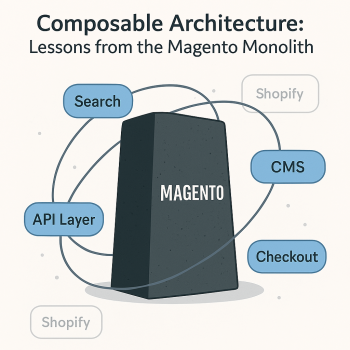Composable Architecture: Lessons from the Magento Monolith
Back in 2018, GraphQL and PWAs were promising a revolution, and “headless” was the new gospel. For those of us running Magento, the pressure to decouple was immediate and intense. But seven years later, Magento 2.4.* remains a solid monolith. It still powers thousands of stores and remains deeply entrenched in eCommerce.
Composable didn’t fail—it just arrived for the few who could afford it.
What’s being sold today as “composable” is really an enterprise playground: multi-million-dollar omnichannel platforms, MACH-certified tech stacks, and a dozen vendors stitched together by systems integrators. Meanwhile, the rest of us have been stuck fighting performance fires and patch cycles while platforms like Shopify, BigCommerce, and Shopware quietly absorbed the low-effort, high-convenience market.


